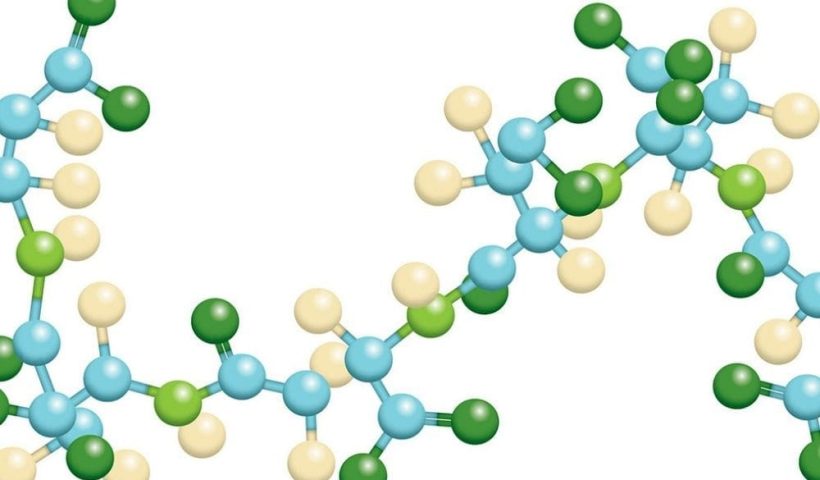
In my travels, the subject of fertilizers comes up often. In these discussions, we sometimes center on the topic of fertilizer particle size—specifically when someone asks me about “nanoparticle” fertilizer. When it comes to liquid fertilizers, the difference between whether something is a solution, a colloidal dispersion, or a suspension depends on the particle size. I thought a brief discussion on the matter might shed some light on this exciting topic and make us better-informed consumers.
First, I think it’s important to define the size of a nanometer. A nanometer is 1 billionth of a meter. Typically speaking, a nanoparticle is generally anything from 1 to 100 nanometers. The easiest distinction to make is whether something is actually in solution. For there to be a solution, there needs to be a solvent (water, for example), and a solute (often a fertilizer salt). If the solute is soluble enough in the solvent, the solute goes into solution completely, meaning that the size of the molecule is now simply just its molecular size. Here’s an example to help clear this up:
Ferrous sulfate heptahydrate is a fairly common iron supplement. It comes as a water-soluble powder that’s typically around 70,000 nanometers in size (which is approximately the size of a salt granule). Once this ferrous sulfate goes into solution though, its particle size is now its molecular size, which is a diameter of approximately 0.122 nanometers.
With this example in mind, one could theoretically claim that any molecule in solution is literally a “nanoparticle.”
Molecules that aren’t in solution graduate to making either a colloid or a suspension. Again, the distinction here is the average particle size. Colloidal particles are typically in the range of 10-1000 nanometers. Suspended particles are larger. Using this measuring stick, some colloidal particles can be defined as nanoparticles, while others are probably a bit too large. So how can you tell the difference just by looking at it? You can’t (at least not without a piece of equipment that can characterize particle size). While this all may seem pretty abstract, did you know that milk is a colloid? According to the experts, milk is approximately 87.5% water, 3.5% protein, 3.7% fat, 4.9% lactose, and 0.7% salts. The white color comes from casein particles, which are proteins that have combined with calcium and phosphate; the average particle size of these casein particles is around 100 nanometers.
So why does particle size really matter?
Some folks claim that nanoparticles can move more efficiently into the plant. For colloidal or suspended particles (particles not in solution), I think it’s safe to say that the smaller the particle, the faster it can break down and go into solution (which is typically how molecules move into plants). This is known as the dissolution rate—how quickly a particle moves into the solution. In addition, particle size dictates how reactive a material is. The smaller the particle, the greater the surface area per unit volume ratio; this leads to a greater portion of the particles on the surface of the material (as opposed to the interior).
So, what’s this really mean to you?
Theoretically, the entire argument about particle size centers around an increased availability of the nutrient to the plant. If you’re paying good money for your fertility product though, you’d want it already reacted and enhanced in some way aside from just being a smaller particle. With this in mind, an even more efficient method of application would be to simply apply nutrients that are already reacted and soluble (as particle size no longer matters at that point in time). Of course, the pitfall here is to make sure it stays soluble—meaning that complexed or chelated nutrients are often more effective as they sidestep the theoretical issue of the molecule precipitating, and then being in the same boat as a colloidal or suspended particle.
All of this information brings us to an important point though: whether the molecule is in solution, a colloid, or a suspension, the plant still needs a certain amount of the nutrient that is a part of that molecule. I usually explain it like this: Iron has a molar mass of 55.845 g/mol or a diameter of approximately 0.024 nanometers. It doesn’t matter how small the particle size is of the iron molecule, or whether it’s in a solution, a colloid, or a suspension. The plant still needs to acquire a certain amount of that 55.845 g/mol iron. While the most efficient means to deliver a nutrient to plants is certainly up for debate (we’re still partial to amino acids and amino-acid polymers), plants will always need a certain amount of that nutrient for optimal growth. Not all nutritional formulations are equal, and some will allow the plant to acquire a larger percentage of nutrients than others (allowing for lower use rate, etc.). Still, there’s a limit to the efficiency of any nutritional formulation, and short of genetic engineering or breeding, plants will always require a certain amount of each nutritional element regardless of the particle size of the nutrient that’s applied.



